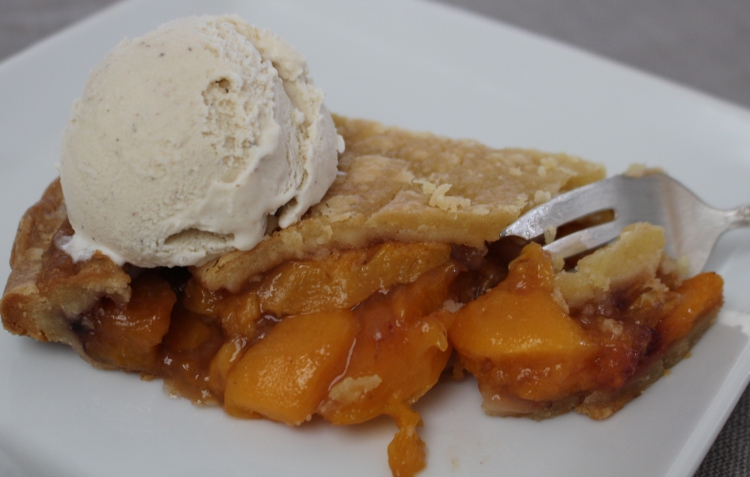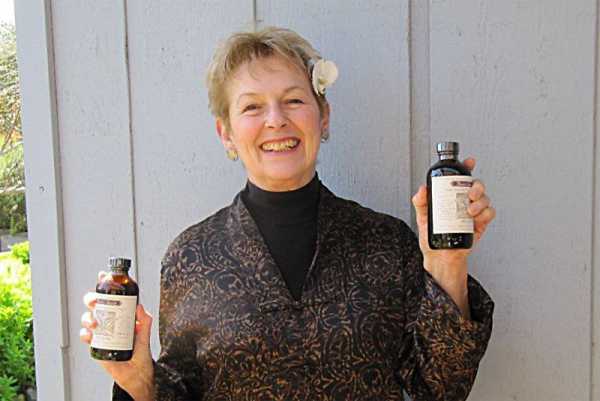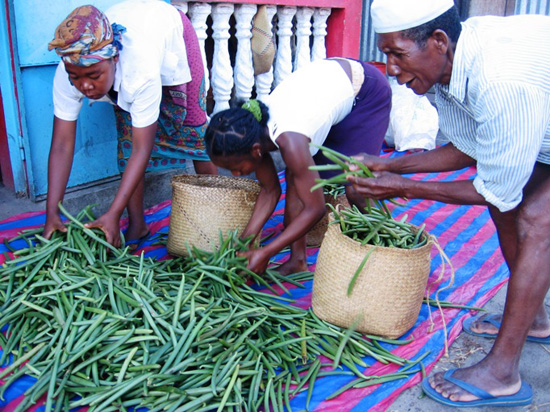
I'm amazed at how superior your vanilla is!
– Des, The Grommet
All true teas come from Camellia sinensis, an evergreen plant that grows mainly in tropical and sub tropical climates. Some varieties can also be grown in marine climates and are cultivated as far north as Cornwall in Great Britain and Seattle in the United States.
Camellia sinensis originated in northern Asia, specifically around the region of northeast India, north Burma, southwest China and Tibet. The plant was then introduced to more than 52 countries from this point of origin.
China has the earliest records of tea consumption, with records dating back to the 10th century B.C. Yunnan Province in China is considered the birthplace of tea, the first region where humans figured out that eating tea leaves or brewing a cup could be enjoyable. Yunnan Province is also considered home to the world’s oldest cultivated tea tree, some 3,200 years old.
In 59 BC, Wang Bao wrote the first known book with instructions on buying and preparing tea, establishing that, at this time, tea was not only a medicine but an important part of one’s diet.
Tea arrived in Japan around the sixth century. Tea became a drink of the religious classes in Japan when Japanese priests and envoys, sent to China to learn about its culture, brought it back to Japan.
The first tea seeds were brought from China by a Buddhist priest in 805. Japanese Emperor Sago brought tea to the aristocratic classes when he encouraged tea cultivation. Green tea became a staple for the upper classes and priests.
The Japanese tea ceremony was introduced from China in the 15th century as a semi-religious social custom. The modern tea ceremony developed over several centuries by Zen Buddhist monks. Both the beverage and ceremony surrounding it played a prominent role in feudal diplomacy.
In the early 17th century the Dutch East Indian Company’s ships brought the first green leaves to Amsterdam from China. By 1636 tea was introduced into France where it was popular with the aristocracy of Paris.
Tea was first offered by China as a gift to Czar Michael I in 1618. The Russian ambassador tried the drink but was unimpressed, and tea didn’t become a part of Russian culture for another 50 years.
The importing of tea into Britain began in the 1660s with the marriage of King Charles II to Portuguese princess Catherine of Braganza. She popularized the drink with the British courtiers. At the same time, Samuel Pepys records drinking “a china drink of which I had never drunk before.” It is probable that early imports came via Amsterdam.
The East India Company brought back many products, of which tea was just one, but it became the most successful It was initially promoted as a medicinal beverage or tonic.
By 1750 tea became Britain’s national drink. Tea’s popularity parallels the increase in importation and sales of sugar as the British preferred sweet tea.
In fact, tea became such a mainstay in Britain and was so important that the American Revolution and the two Opium Wars with China were directly triggered by Britain’s attempts to control the tea market.
There are three major botanical varieties and some minor varieties grown worldwide.
Taste varies on location, soil, rainfall and amount of sun. In addition to a warm climate, tea plants require at least 50 inches of rainfall a year and prefer acidic soil.
Two principal varieties of plants are used. The small-leaved China plant (C. sinensis sinensis), which is used for most Chinese, Formosan (Taiwanese) and Japanese teas (but not Pu’erh); and the large-leaved Assam plant (C. sinensis assamica), which is used in most Indian and other teas (but not Darjeeling).
Within these botanical varieties, there are many traditional strains and modern varieties, especially within the small-leaved China plant. Leaf size is the chief criterion for the classification of tea plants: Assam type, characterized by the largest leaves, China type, characterized by the smallest leaves and Cambod, characterized by leaves of intermediate size.
Many high-quality tea plants are cultivated at elevations of up to 5,000 feet (1500 meters). High altitude tea plants grow more slowly and have a finer flavor.
Wild tea plants can grow into trees. However, cultivated plants are pruned to about three feet or waist-high for easier harvesting, known as “plucking” in the trade.
Only the top 1-2 inches of the mature plant are picked. These buds and leaves are called flushes. A plant will grow a new flush every seven to ten days during the growing season.
Tea is known by two names that are used worldwide. The word “tea” and its relatives te, tay, the, etc. are based in the Chinese Amoy Min Nan dialect Te (pronounced “tay”). The word “cha” was used in Southern China in Canton, Hong Kong and Macao as well as in Northern Mandarin Chinese. Cha, chai, char and other variants are still used. This term was used in ancient times to describe the first flush harvest of tea. Yet another different pronunciation is zu, used in the Wu dialect, spoken in the Shanghai region. Korea and Japan call tea “cha,” though in Japan, “ocha” is the more polite word.
The flavor, brightness, aroma, strength and color of tea vary depending on its variety, where it is grown, the time of year it is picked and processed, the specific farming techniques used to grow the crop, how the leaves are harvested and how the leaves are turned into finished tea.
Tea is traditionally classified based on the techniques with which it is produced and processed:
White tea: unwilted and unoxidized. The leaves are picked, sometimes lightly steamed and then dried. The flavor is vegetal and grassy. White teas contain the least amount of caffeine.
Yellow tea: unwilted and unoxidized but allowed to turn yellow.
Green tea: wilted and unoxidized. It is steamed for more delicate herbal flavors or pan-fired for a heartier, aromatic quality, before drying.
Oolong: wilted, rolled and partially oxidized. The oxidation process is sometimes stopped and started more than once. Oolong has a smooth aromatic character and is a favorite of many tea professionals. It tend to be expensive because of the work involved in processing.
Black tea: wilted, crushed, and fully oxidized. The rolling of black tea breaks open the leaves and allows oxidation. It is then dried to stop the oxidation process.
Post-fermented tea: Green Tea that has been allowed to ferment/compost. These are usually Pu’erh teas, which are sold in compressed cakes. Its secondary fermentation gives it a very dark, earthy quality. In China, our black teas are called red, whereas pu’her is known as black.
China is the largest producer of tea in the world followed by India, Kenya and Sri Lanka.
The total amount of tea produced worldwide in 2005 was 3,550,194 metric tons.
Tea is second only to water as the beverage of choice worldwide. More tea is drunk than coffee, sodas, milk, hot chocolate and alcohol combined!
A U.S. patent for a “tea leaf holder made out of fabric” was granted in 1903.
Tea merchant Richard Blechynden has been credited with inventing iced tea in 1904 at the St. Louis World’s Fair. While he popularized the drink, alcoholic tea punches were served in the 19th century in the U.S. and recipes for iced tea have been found in cookbooks from the late 19th century.
Roughly 80 percent of tea served in the US is iced. In many parts of the US iced tea is always sweetened with sugar or other sweeteners.
In 1907, American tea merchant Thomas Sullivan began distributing tea samples in small silk bags with a drawstring. Consumers noticed that they could simply leave the tea in the bag, and then re-use the bag by adding fresh tea. In 1953 Tetley launched tea bags in Great Britain. It was an immediate success.
In the 1960s approximately 3% of all tea drunk in the UK was from tea bags. Now 96% of tea is brewed from tea bags.
Typically bagged teas have been made from crushed leaves and dust, the poorest grades of tea. This has changed considerably in the last five to ten years with a new wave of high-end tea companies. For instance, tea bags shaped in a pyramid and looser tea bags were developed to permit whole-leaf tea to expand gently with space allowed for full expansion. Some of the newer bagged teas have returned to the use of mesh cloth instead of paper.
200 cups of tea can be brewed from one pound of loose tea leaves. Purchasing loose tea is usually less expensive than bagged tea as you are not paying for the packaging.
Instant tea is brewed tea that has been dehydrated and granulated.
The Duchess of Bedford, one of Queen Victoria’s Ladies in Waiting, came up with the idea of a late afternoon meal of tea, thin sandwiches and small cakes, which Queen Victoria enthusiastically supported.
There are actually two types of British tea: Low tea, also known as afternoon tea, and
High tea. High tea has nothing to do with class or income. It refers to tea served on a dining room table as opposed to afternoon tea served from a lower tea table.
High tea (sometimes called meat tea in England) is generally served between 5:00 and 6:00 p.m. and features a hot dish, hearty sandwiches, scones, cakes, biscuits (cookies) and tea. It is often served as supper. Afternoon tea is traditionally served around 4:00 p.m. and is a lighter meal, which includes scones, thin sandwiches, biscuits and assorted cakes, along with tea. Either tea may include jams, preserves and clotted cream.
Tea leaves contain more than 700 chemicals that create its unique aromas and flavor as well as its considerable health benefits. In fact, tea was first considered a medicinal and later became a beverage. This was true not only in China, but through much of the world.
The flavanoids, amino acids, vitamins C, E and K, caffeine and polysaccharides in teas all have health-enhancing qualities. Tea also assists in cell-mediated immune function of the human body. Tea plays an important role in improving beneficial intestinal microflora, as well as providing immunity against intestinal disorders and in protecting cell membranes from oxidative damage.
Tea can protect the teeth from caries due to the presence of fluorine. It can normalize blood pressure, lipid depressing activity, and aid in the prevention of coronary heart diseases and diabetes by reducing the blood-glucose activity. Both green and black tea infusions contain a number of antioxidants, mainly catechins that have anti-carcinogenic, anti-mutagenic and anti-tumoric properties.
Tea has had a major resurgence of popularity in the United States in recent years for several reasons. We can get tea faster and therefore fresher than in the past, and the increase in demand is encouraging tea farmers to produce and sell uniquely good teas in small quantities. Tea’s health benefits have also encouraged people to drink more tea.
While initially it was believed that only green teas had significant flavinoids, this has been disproven; all tea has health benefits.
Herbal teas are not actually teas. The correct term is tisane (ti-zane). Tisanes can be made from a variety of herbs and spices and may also contain citrus peels and fruit.
Rooibos (Roy-buss), made from a South African shrub that grows nowhere else in the world and is grown and processed by indigenous South Africans, is used in infusions and tea blends.
Yerba mate comes from a South American shrub whose leaves create a drink that tastes like a cross between green tea and coffee.
I was given a small bottle of Rain’s Choice in a gift basket and I have been hooked ever since. The flavor makes all of my baking so much better! I will never use grocery store vanilla again!


© 2021. All Rights Reserved
Designed/Developed by Kat & Mouse
One Response
A very interesting article! When I am at work in the office I mainly drink green tea. I find it dosnt give me that huge rush and then then big drop like coffee sometimes can nor does it keep me up at night plus Iove the health benifits of green tea as well.